Western Red Cedar Lumber
- July 31, 2023
- 0 comment
Western Red Cedar (Thuja plicata) stands as a treasured gem within the lumber industry, celebrated for its remarkable versatility and resilience. With a reputation for exceptional durability, this softwood species remains highly sought-after for a plethora of applications. Its natural resistance to decay and insects further cements its status as a preferred material for outdoor projects, such as decking, siding, and fences, where its ability to withstand the elements shines.
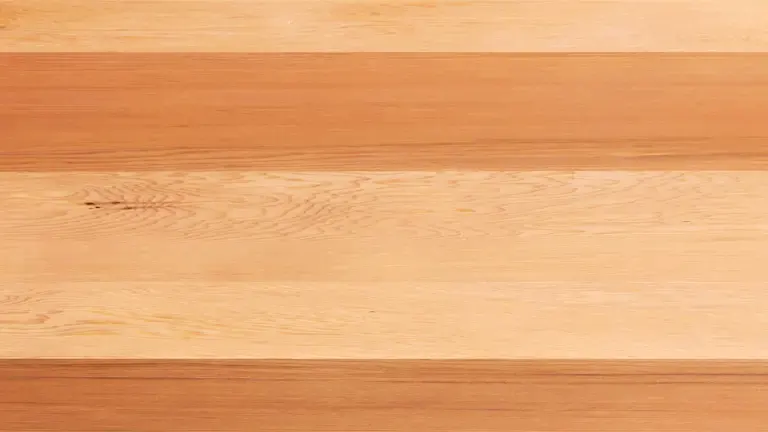
Moreover, Western Red Cedar’s captivating appearance, boasting shades ranging from light pinkish-brown to deep reddish-brown, complements its straight, fine grain, yielding a smooth and refined texture that enhances its aesthetic allure. These inherent features make it an ideal choice for interior applications as well, with applications extending to furniture, paneling, and decorative items.
Beyond its physical attributes, Western Red Cedar presents an additional allure in its distinct and pleasing aroma, which adds an extra dimension of appeal, particularly for projects involving indoor spaces. Carpenters and craftspeople appreciate the wood’s workability, as it responds gracefully to both hand and machine tools, facilitating seamless shaping, cutting, and finishing.
| Common Name(s) | Western Red Cedar |
|---|---|
| Scientific Name | Thuja plicata |
| Distribution | Western North America, primarily in coastal regions from Alaska to California |
| Tree Size | Typically reaches 150-200 feet in height with a trunk diameter of 3-6 feet |
| Average Dried Weight | 22-31 lbs/ft3 (352-496 kg/m3) |
| Specific Gravity | 0.35-0.50 (comparatively lightweight) |
| Janka Hardness | 350 lbf (1,560 N) |
| Modulus of Rupture | 7,500 lbf/in2 (51.7 MPa) |
| Elastic Modulus | 1.12 million lbf/in2 (7.73 GPa) |
| Crushing Strength | 5,070 lbf/in2 (34.9 MPa) |
| Shrinkage | Radial: 2.4%, Tangential: 4.8%, Volumetric: 7.3%, T/R Ratio: 2.0 |
Characteristics
Color/Appearance
Western Red Cedar exhibits a beautiful array of colors, ranging from a light pinkish-brown in its heartwood to a deep reddish-brown hue. The sapwood, found near the outer edges of the tree, tends to be paler in comparison. As the wood ages and is exposed to sunlight, it undergoes a natural darkening process, further enhancing its rich and attractive appearance over time.
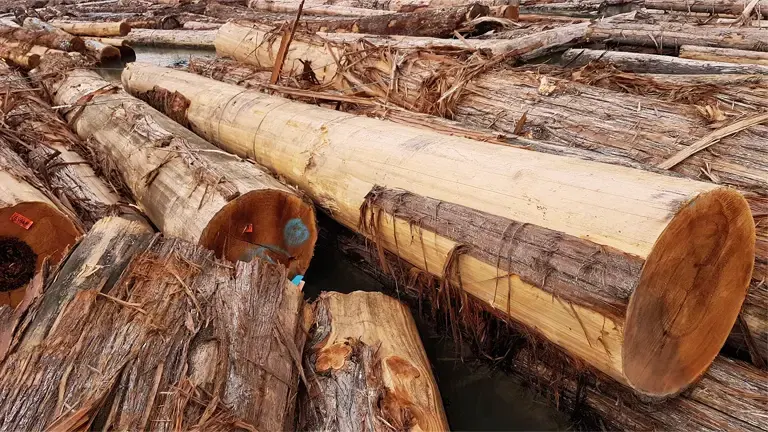
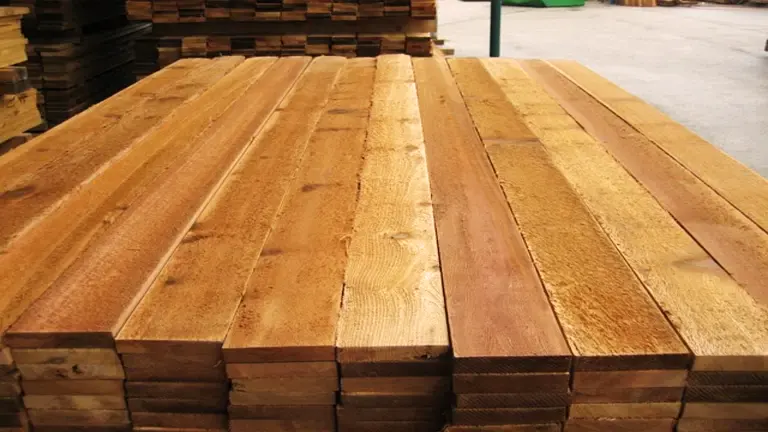
Grain/Texture
One of the standout characteristics of Western Red Cedar is its straight, even grain, which imparts a sense of uniformity and elegance to the wood. Complementing this is a fine texture that lends the material a smooth and polished surface. This fine texture and consistent grain pattern make Western Red Cedar an ideal candidate for finishing, as it readily accepts paints, stains, and sealants with grace.
Rot Resistance
Western Red Cedar’s innate resistance to decay sets it apart as a top-notch choice for outdoor applications and exposed structures. The wood contains natural oils and extractives that act as a deterrent to insects and fungi, providing lasting protection against environmental elements. This remarkable rot resistance ensures that projects made from Western Red Cedar can endure harsh weather conditions and retain their integrity for extended periods.
Workability
Woodworkers and craftsmen alike hold Western Red Cedar in high regard for its ease of workability. The wood’s low density and softness make it a breeze to cut, shape, and sand using both hand and machine tools. The material is cooperative and forgiving, allowing for precise detailing and intricate designs without undue effort.
Odor
Adding to its allure, Western Red Cedar emits a distinct and pleasant aroma that further enhances its appeal. This natural fragrance is appreciated in various applications, and interestingly, the aroma can also act as a deterrent to certain insects, making it a practical choice for outdoor structures and furniture.
Allergies/Toxicity
While Western Red Cedar is generally considered non-toxic, some individuals may experience skin irritation when handling the wood. This is attributed to the natural oils present in the wood, which can cause mild reactions in sensitive individuals. Overall, however, the wood is considered safe to work with for most people.
Pricing/Availability
Western Red Cedar is widely available and is reasonably priced, making it accessible to consumers across various budgets. The cost may vary depending on factors such as grade and size, but its popularity ensures that it is commonly found in lumberyards and specialty wood suppliers.
Sustainability
The Western Red Cedar species boasts eco-friendly credentials, thanks to responsible forest management practices. Sustainable harvesting ensures that the wood’s availability remains stable, and conscientious efforts are made to protect and preserve the species and its habitat for future generations.
Common Uses
Western Red Cedar’s versatility makes it a favored choice for an array of applications. It is frequently utilized for exterior siding, where its durability and rot resistance are highly valued. Additionally, it finds its way into decking, fencing, and outdoor furniture due to its ability to withstand the rigors of outdoor environments. Boat builders appreciate its lightweight and water-resistant properties. For interior applications, Western Red Cedar excels in paneling, trim, and furniture, where its striking appearance and ease of working shine through.
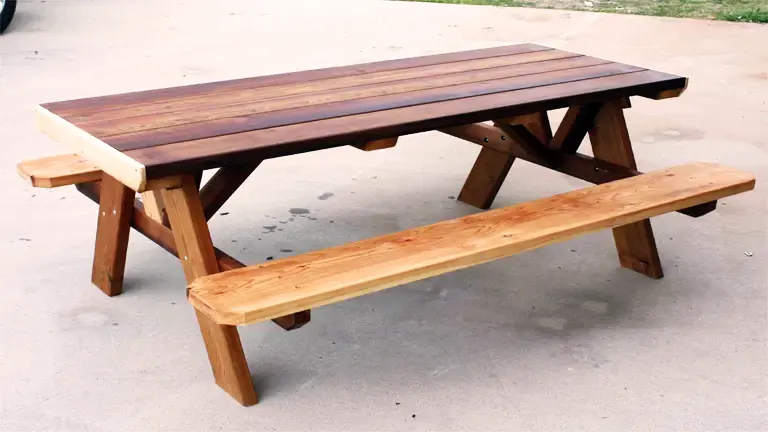
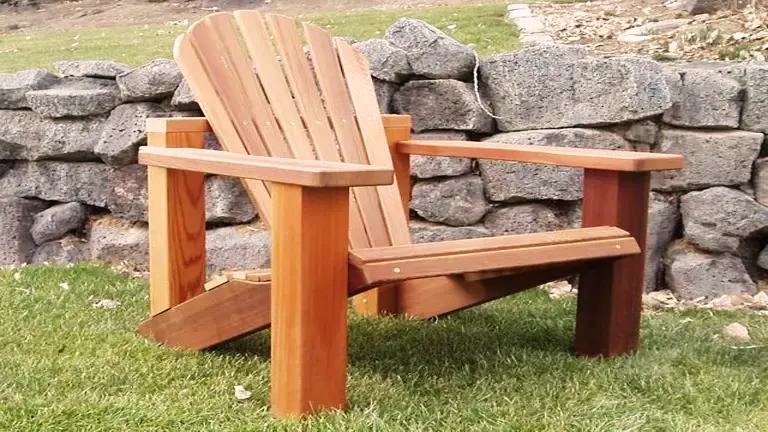
Frequently Asked Questions
- Is Western Red Cedar suitable for outdoor projects?
Yes, Western Red Cedar is well-known for its exceptional resistance to decay and rot, making it a popular choice for outdoor projects like decking, siding, and fences. - Can Western Red Cedar be stained or painted?
Yes, Western Red Cedar can be easily stained or painted to achieve the desired color and finish. Its smooth grain takes finishes well. - Does Western Red Cedar require any special maintenance?
While Western Red Cedar is naturally durable, regular maintenance like sealing or staining can help preserve its appearance and extend its lifespan, especially in outdoor applications. - Is it suitable for structural applications?
Yes, Western Red Cedar has good strength properties and is suitable for various structural applications like beams, posts, and joists. - Is Western Red Cedar suitable for indoor use?
Absolutely! Its pleasing appearance, workability, and natural aroma make it a popular choice for interior paneling, trim, and furniture. - Can Western Red Cedar be used in wet environments?
Yes, Western Red Cedar’s rot resistance makes it an excellent choice for wet or humid environments, such as saunas, bathrooms, and hot tub surrounds. - Is Western Red Cedar sustainably harvested?
Yes, responsible forestry practices are generally followed, making Western Red Cedar a sustainable choice compared to other species.
We’d love to hear from you! Share your personal experiences and thoughts about Western Red Cedar in the comments section below. Your insights could be invaluable for others looking to make well-informed decisions!


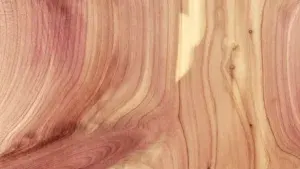
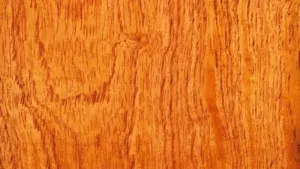
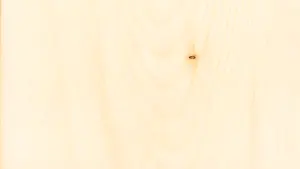
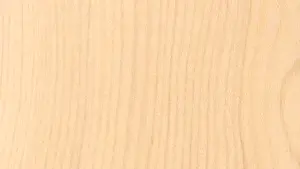
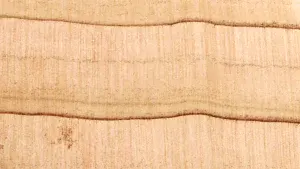
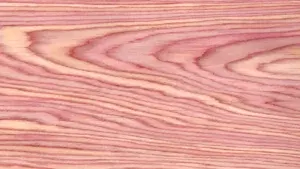
Leave your comment